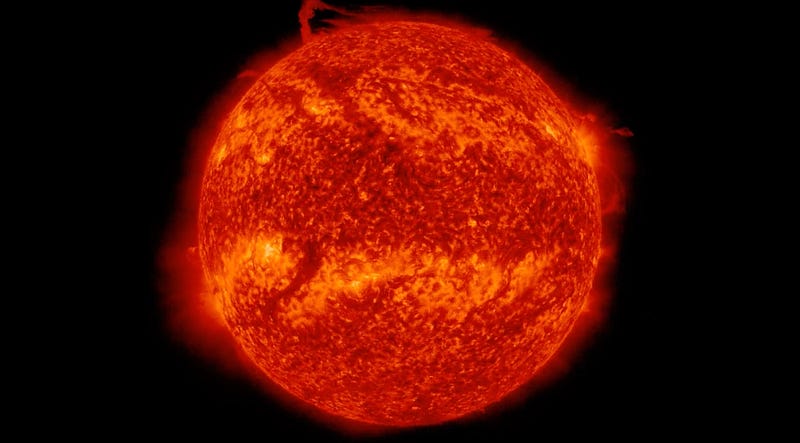Increased Solar Activity: A Glimpse into the Sun's Dynamics
Written on
Chapter 1: Understanding Solar Activity
In recent times, there has been a notable surge in solar activity. While most of this activity is benign and leads to minor disruptions in shortwave communication, there are instances where the sun unleashes powerful energy bursts capable of affecting satellites and other technologies. These fluctuations are tied to the sun's 11-year cycles, with the current cycle expected to peak in 2025.
A space weather physicist, Dr. Tamitha Skov, shared a significant observation on Twitter regarding a substantial amount of plasma that erupted from the sun.
“Talk about polar vortex! Material from a northern prominence just broke away from the main filament & is now circulating in a massive polar vortex around the north pole of our star. Implications for understanding the Sun’s atmospheric dynamics above 55° here cannot be overstated!”
The ongoing series of tweets showcased the eruption and the expelled filament of solar plasma spiraling around the sun’s north pole, as captured in an infrared observation video.
“More observations of the #SolarPolarVortex reveal it took roughly 8 hours for material to circumnavigate the pole at approximately 60-degree latitude. This means an upper bound in the estimation of horizontal wind speed in this event is 96 kilometers per second or 60 miles a second!”

Section 1.1: Recent Eruptions and Their Impact
On February 7, another significant solar flare erupted, contributing to short-term disruptions in shortwave communications over the Pacific Ocean. These recent explosions indicate that we are nearing the apex of the current solar cycle. In some cases, the magnitude of these explosions can be severe enough to impact Earth, particularly if the blast is directed toward our planet and accompanied by substantial coronal mass ejections.
The effects of each solar cycle on Earth vary considerably. Historical data, including Carbon-14 tests from trees and solar records from glaciers, suggest that Earth experiences intense solar storms during certain intervals. The repercussions of the expected peak in 2025 remain a topic of ongoing discussion.
A particular concern is the presence of sunspot AR3213, which spans approximately 62,000 miles (100,000 km) across the sun’s surface and is oriented toward Earth. However, astronomers regularly monitor solar activity, especially from the L1 point, ensuring timely updates on any unusual occurrences that may necessitate protective measures.
Scott McIntosh, a solar physicist and deputy director at the National Center for Atmospheric Research in Boulder, Colorado, stated:
“Once every solar cycle, it forms at the 55-degree latitude, and it starts to march up to the solar poles. It’s very curious. There is a big ‘why’ question around it. Why does it only move toward the pole one time and then disappear and then come back, magically, three or four years later in the same region?”
Despite the limited understanding we currently possess about solar dynamics, it's essential to contemplate the strategies we can employ to safeguard against the sun's unpredictable behavior.
The first video illustrates a surprising event where a piece of the sun detached from its northern pole, leaving scientists in awe. The footage provides valuable insights into the dynamics of solar activity.
The second video addresses the impending flip of the sun's magnetic field and the complications that may arise from this phenomenon. Understanding these changes is crucial for predicting future solar impacts.